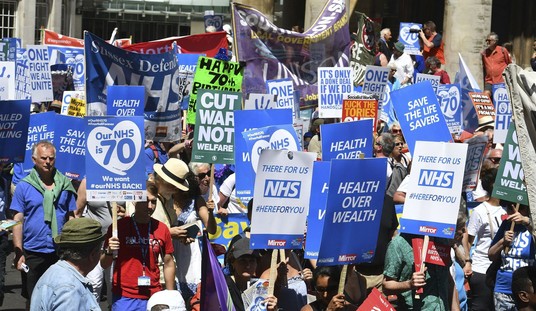Yesterday the Foundation for Individual Rights in Education (FIRE) published a 5,000 word article on the battle over the teaching of Critical Race Theory in schools. The article covers a lot of territory and is broken in 13 separate points. I’m only going to focus on four of them but you’re free to read the whole thing which is very nuanced and tries to fairly weight the concerns about what is going on from both sides of the argument.
If I had to sum up the gist of this long piece it’s that the right and left are not really communicating. The left is expressing concern over some of what they are seeing in schools and the left is a) misreporting what the bills actually say and b) playing semantic games with the phrase “critical race theory.” So let’s start with that last point first.
FIRE points out that CRT is not the ideal label for what people are responding to. However, FIRE notes that dismissing concerns about what is being taught in schools because it doesn’t fit a dictionary definition of CRT is essentially a dodge (or as John McWhorter called it a “debate team stunt”):
A lot of arguments dismiss the bills by claiming “they don’t teach critical race theory in K-12!”, pointing to the fact that Bell’s work is on few, if any, K-12 syllabi. But that is a refutation of a point no one is actually making.
Like it or not, the acronym “CRT” as commonly used in 2021 doesn’t refer to the foundational texts and authors in the academic movement. It’s a shorthand for certain ideas that have filtered (in reductive forms or not) from CRT thinkers into the mainstream, including in bestselling books like “White Fragility” and “How to Be an Antiracist” — ideas like how relationships between individual white and nonwhite people are those of the oppressor and oppressed, that all white people are consciously or unconsciously racist, that ostensibly raceblind concepts like “meritocracy” are the result of white supremacy, among others.
Indeed, many if not most of the bills ban teaching of these concepts, rather than critical race theory itself. Arguing that the bills are bad purely based on the semantics that they are not referring to “true” CRT is little more than deflection. Arguing that the term “CRT” as applied to the bills is a misnomer may be correct, but it won’t persuade anyone that the bills, or the concerns underlying them, should be abandoned.
CRT is not an ideal or completely accurate name for what is spreading into schools and corporations but what people are objecting to using that label does exist and is being taught in schools. Which brings us to the obvious core of the argument. What is it that people promoting these anti-CRT bills are actually against. Contrary to some of the reporting suggesting this is an effort to prevent discussion of slavery or racism or America’s history, FIRE points out that much of what these bills are aimed at should be objectionable to people on the left as well as those on the right:
With the exception of the vague kinds of clauses mentioned above, most of what these bills prohibit are speech or patterns of behavior by teachers that even many of the critics of these bills would find problematic, and arguably would already run afoul of laws prohibiting racial discrimination and harassment. For example, North Carolina’s HB 324, mentioned above, prohibits public K-12 schools from “promoting” the following concepts:
(1) One race or sex is inherently superior to another race or sex.
(2) An individual, solely by virtue of his or her race or sex, is inherently racist, sexist, or oppressive, whether consciously or unconsciously.
(3) An individual should be discriminated against or receive adverse treatment solely or partly because of his or her race or sex.
(4) An individual’s moral character is necessarily determined by his or her race or sex.
(5) An individual, solely by virtue of his or her race or sex, bears responsibility for actions committed in the past by other members of the same race or sex.
(6) Any individual, solely by virtue of his or her race or sex, should feel discomfort, guilt, anguish, or any other form of psychological distress. […]
You’d really like to think that most Americans would be against all of these things especially as they apply to children. As the piece goes on to point out there are actual incidents in which children have been harmed by this sort of teaching:
I was disturbed to read some of the examples in my co-author — and FIRE colleague — Bonnie Snyder’s forthcoming book Undoctrinate: How Politicized Classrooms Harm Kids and Ruin Our Schools—And What We Can Do About It, such as:
- A biracial high school student in Las Vegas was allegedly singled out in class for his appearance and called derogatory names by his teacher. In a lawsuit, the student’s family alleges he was labelled an oppressor, told denying that status was “internalized privilege,” and told he needed to “unlearn” the Judeo-Christian principles imparted by his mother. When he refused to complete certain “identity confession” assignments, the lawsuit claims, the school gave him a failing grade. He has had to attend counseling.
- Third grade students in California were forced to analyze their racial and other “identities,” rank themselves according to their supposed “power and privilege,” and were informed that those in the “dominant” culture categories created and continue to maintain this culture to uphold power.
- Parents in North Carolina allege that middle school students were forced to stand up in class and apologize to other students for their “privilege.”
- Buffalo public schools teach students that all white people perpetuate systemic racism and are guilty of implicit racial bias.
- Elementary children at the Fieldston School in Manhattan were sorted by race for mandatory classroom exercises.
- A head teacher in Manhattan was caught on tape acknowledging that the curriculum at his school teaches white students that they’re inherently “evil” and saying, “we’re demonizing white people for being born.”
While there is some debate to be had over how widespread the phenomenon is, some students are being made to feel, in class, that their mere existence is problematic and requires an apology or explanation. These bills, wise or not, are intended to address this problem. If your argument against these bills is that they’re much ado about nothing, or a solution in search of a problem, I think you should look deeper and think more critically about what proponents of these laws are worried about.
As for whether the bills themselves are constitutional, FIRE concludes that “states can formally adopt, or reject, classroom educational materials produced by organizations such at the Zinn Education Group, the Southern Poverty Law Center, The Heritage Foundation, Black Lives Matter, or, for that matter, FIRE.” But the piece concludes by suggesting the real outcome of all these laws is going to be lots of lawsuits with activists and parents fighting it out in court over what is and is not allowed in the classroom.








Join the conversation as a VIP Member